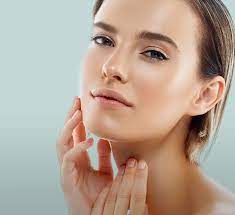Skin peeling treatments have become increasingly popular in recent years as people seek ways to improve the appearance and texture of their skin. Whether you are dealing with acne scars, sun damage, or just want a brighter complexion, there are a variety of skin peeling treatments available to help you achieve your desired results. In this comprehensive guide, we will explore the different types of skin peeling treatments, how they work, and what you can expect during and after treatment.
chemical peel at home are one of the most common types of skin peeling treatments. During a chemical peel, a solution is applied to the skin that causes it to exfoliate and eventually peel off, revealing smoother and more even-toned skin underneath. There are different strengths of chemical peels available, ranging from superficial peels that require little downtime to deeper peels that may result in several days of redness and peeling. It’s important to consult with a skincare professional to determine which type of chemical peel is best for your specific concerns.
Another popular option for skin peeling treatments is microdermabrasion. This non-invasive procedure uses a handheld device to gently exfoliate the outer layer of dead skin cells, revealing fresh, radiant skin underneath. Microdermabrasion is suitable for all skin types and can help improve the appearance of fine lines, dullness, and uneven texture. While multiple sessions may be needed for optimal results, many people notice an immediate improvement in their skin’s appearance after just one treatment.
For those looking for a more intense skin rejuvenation treatment, laser resurfacing may be worth considering. This procedure uses laser technology to remove damaged layers of skin and stimulate collagen production, resulting in smoother and firmer skin. Laser resurfacing can target specific concerns such as wrinkles, scars, and hyperpigmentation with minimal downtime compared to traditional surgical procedures. However, it’s important to follow post-treatment care instructions carefully to ensure proper healing and long-lasting results.
In addition to professional treatments, there are also at-home options available for those looking to maintain their results between appointments. Over-the-counter products containing ingredients such as alpha hydroxy acids (AHAs), beta hydroxy acids (BHAs), or retinol can help promote cell turnover and exfoliation at home. Regular use of these products can improve the overall texture and tone of your skin while reducing the appearance of fine lines and blemishes.
Conclusion:
Skin peeling treatments offer a range of benefits for improving the health and appearance of your skin. Whether you choose a chemical peel, microdermabrasion, laser resurfacing or at-home exfoliating products, there are options available to suit every budget and skincare concern. Consult with a skincare professional to determine which treatment is best for you based on your goals and individual needs. With consistent care and maintenance, you can achieve smoother, brighter skin that looks healthy and youthful for years to come.
The Ultimate Guide to Skin Peeling Treatments
